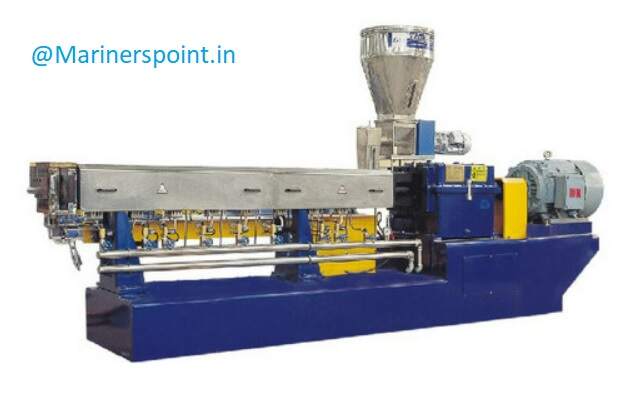In this article you will learn about Process Planning Estimating And Costing and various terms associated with it for clear understanding.
Process Planning Estimating And Costing
COST EVALUATION
A process design is not complete until one have a good idea of the cost required to manufacture the product. Generally the lowest-cost design will be successful in a free market place. So an understanding of the elements that make up the cost is vital.
Elements of costs : The constitutions of a product or cost elements can broadly be grouped into (1) recurring costs or manufacturing cost or operating costs and (2) non-recurring costs. They may again be classified as direct costs, indirect costs while capital costs come under non-recurring costs. Recurring costs include all direct and indirect costs while capital costs come under non-requiring costs.
Direct Costs
Direct costs are the costs of those factors which can be directly attributed to the manufacturing of a specific product. These include costs of material and labour. Material cost is the cost of that material which goes into finished product and includes all wastes which has been has been cut away from the original stock. Labour cost varies form machine to machine and is usually calculated by multiplying the time required for an operation by labour rate. Thus, the time to set up and perform an operation must be estimated to find out its labour cost.
Indirect costs
Indirect costs are the costs of those factors which can only be indirectly attributed to the manufacture of a specific product. They are sometimes called overheads or on costs. Overhead costs are commonly calculated by multiplying the operation time by an overhead rate. Such a rate is obtained by dividing the total indirect costs applicable to a manufacturing unit for a period of time (say a month or week) by the total number of hours of direct labour in the same period.
Capital costs
Capital costs are one-time costs or nonrecurring costs which include depreciable facilities such as plant, building or manufacturing equipment and tools, and non-depreciated capital costs, such as land. Capital costs are determined by distributing the major machine and tool costs on an hourly basis or among the piece produced.
The total cost of a product is the direct cost of manufacturing the product plus any indirect costs attributed to the manufacturing of the product.
In order for the process engineer to use cost data as a tool to help analyse manufacturing problem, costs may be more conveniently grouped as fixed costs and variable costs.
Fixed costs include preparation costs such as of tooling setting up, etc., and also the interest and depreciation costs which are independent of the quantity of the product manufactured.
Variable costs are those costs which vary as the quantity of product made varies. This includes the direct labour and material costs, and also that part of the indirect costs which will vary as production varies. The total cost of a product can also be seen to be fixed cost plus variable cost.
Cost Structure
Cost structure : The elements of cost can be combined to give the following types of cost:
1. Prime cost : Prime cost or direct cost is given as :
Prime cost = Direct material + Direct labour + direct expenses.
2. Factory cost : Factory cost or works cost is given as :
Factory cost = Prime cost + Factory expenses.
3. Manufacturing cost : This is given as :
Manufacturing cost = Factory cost + Administrative expenses.
4. Total cost : Total cost is given as :
Total cost = Manufacturing cost + Selling and distributing expenses.
5. Selling price : Selling price is given as : Selling price = Total cost + Profit.
STANDARD COSTS
In cost accounting actual or recorded costs or standard or predetermined costs are used. The nomenclature actual cost is misleading. Usually average labour rates are used rather then the actual ones and arbitrary allocations are made for use of capital equipment and for general and administrative costs. Also actual costs are compiled long after the job in completed. This approach is chiefly aimed at financial accountability than cost control.
Standard costs are based on the proposition that there is certain amount of material in a part and a given amount of labour goes into the part’s manufacture. In a given period of time costs tend to vary around some average cost per unit or per hour. Through the use of standard costs, guesswork is reduced and a standard that measures performance is established. Each part and assembly has a standard cost card on which is recorded the standard material, labour, and overhead costs, and the total cost.
The system of standard costs consists of two parts : (1) a base standard and (2) a current standard. The base standard is determined infrequently, e.g., once a year, and the current standard represents the later cost. The difference between the two is the cost variance.
ESTIMATING LABOUR COSTS
All direct and in direct costs excluding labour costs are determined by the accounts department of the plant. Process planners are mostly concerned with labour costs which are directly related to the process of manufacturing. However, the total time required by workers to perform an operation may be divided into following classes :
1. Set-up time : This is the time required to set up elements to prepare for the operation. The elements include: time to study the blue print or to do any paper work, time to get tools from tool-room, time to install the tools on the machine. Set-up time is performed usually once for each lot of parts. If 20 min are required for a set-up time must be charged against each piece. The time for each or the elements is taken from standard tables usually available with the estimators.
2. Man or handling time : This is the time the operator spends loading and unloading the work, manipulating the machine and tools, and making measurements during each of the operation.
3. Machine time : This is the time during each cycle of the operation that the machine is working or the tools are cutting.
4. Tear down time : This is the time required to remove the tools from the machine and to clean the tools and the machine after the last part of the lot or batch is machined. This occurs only once in a lot.
5. Down or lost time : This is the unavoidable time lost by the operator due to breakdowns, waiting for the tools and materials.
The time to perform an operation also includes time for personal needs, time to change and re-sharpen tools, etc. which are taken to be about 20 per cent of the sum of all other times. Besides, there are inspection or checking times which vary from instrument to instrument.
Each operation on a particular type of machine tool is divided into a number of small elements. These elements can be standardized, measured and then recorded. This is mostly done under Time and Motion study. Standard data is also available for various times. Machining times are calculated with the help of formulae for each machining operation which takes into account the feeds, speeds, depth of cut and tool travel plus tool approach.
Machine time : All machining times can be calculated with the basic formula

Calculation of machining time for each operation and their feed, speed and depth of cut have been given in each chapter or they may be available in hand books.
Methods of Costing
The method used to develop cost evaluation fall into three categories: methods engineering, cost by analogy, and statistical analysis of historical data.
In the methods engineering approach, that is usually followed, the separate elements of work are identified in great detail and summed into the total cost per part. A typical, but simplified example, is the production of a simple fitting from a steel forging.
Check Out Other Important Topics
What is Process Planning | Process Planning Steps, Types, Advantages
What is Cold Working – Methods & Working Processes
What is Hot Working ? Methods & Processes
Forging Operations – Types, Methods, Advantages, MCQs
What is Drop Hammer Forging Process ?
Steel Making Process – Complete Overview with Flowchart
| IC Engine | Important PDFs | Boilers | Synergy Maritime Exam | Naval Arch | MEO Class 4 |
| Interview Questions | Difference Between | Types of Pumps | Auxiliary Machines | Types of Valves | Home |


